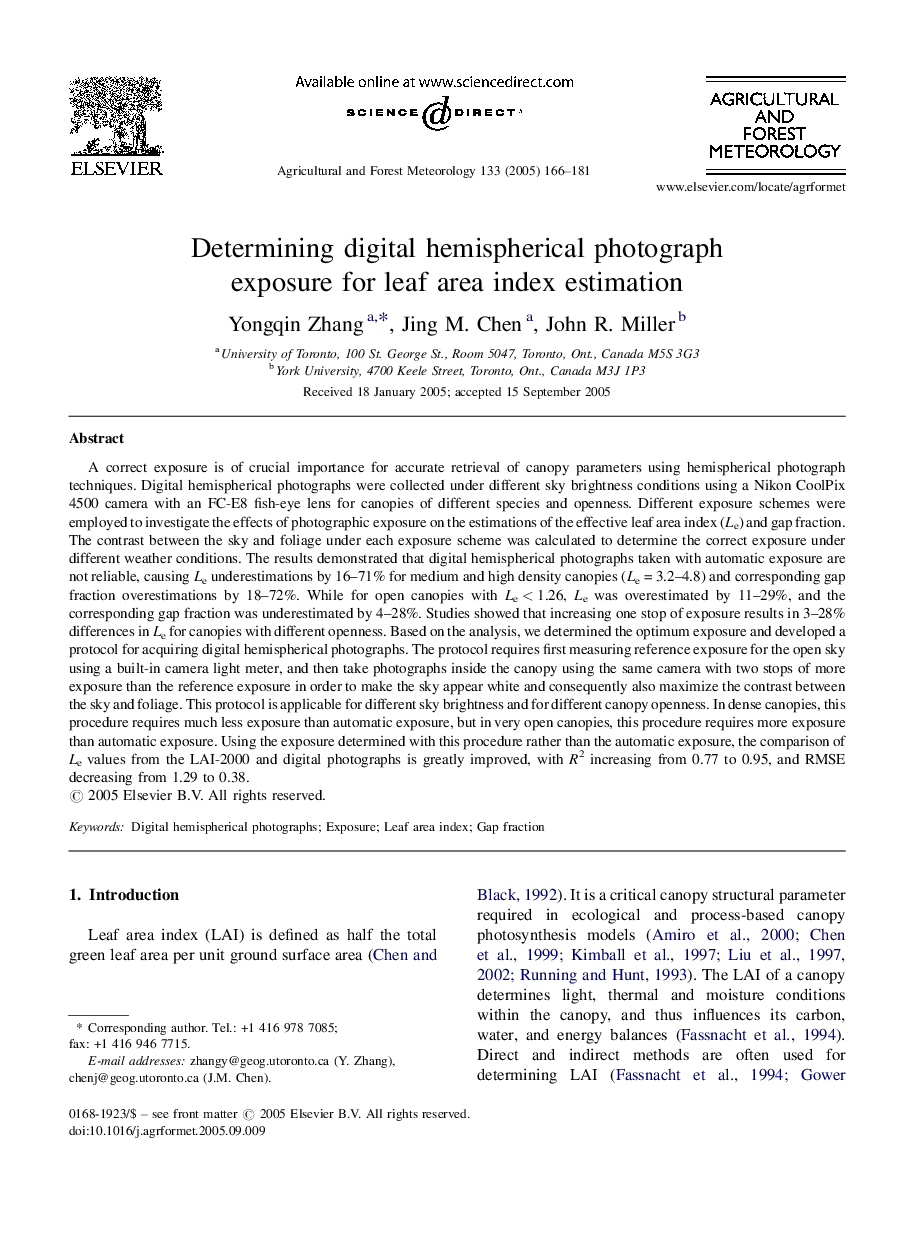| Article ID | Journal | Published Year | Pages | File Type |
|---|---|---|---|---|
| 9619433 | Agricultural and Forest Meteorology | 2005 | 16 Pages |
Abstract
A correct exposure is of crucial importance for accurate retrieval of canopy parameters using hemispherical photograph techniques. Digital hemispherical photographs were collected under different sky brightness conditions using a Nikon CoolPix 4500 camera with an FC-E8 fish-eye lens for canopies of different species and openness. Different exposure schemes were employed to investigate the effects of photographic exposure on the estimations of the effective leaf area index (Le) and gap fraction. The contrast between the sky and foliage under each exposure scheme was calculated to determine the correct exposure under different weather conditions. The results demonstrated that digital hemispherical photographs taken with automatic exposure are not reliable, causing Le underestimations by 16-71% for medium and high density canopies (Le = 3.2-4.8) and corresponding gap fraction overestimations by 18-72%. While for open canopies with Le < 1.26, Le was overestimated by 11-29%, and the corresponding gap fraction was underestimated by 4-28%. Studies showed that increasing one stop of exposure results in 3-28% differences in Le for canopies with different openness. Based on the analysis, we determined the optimum exposure and developed a protocol for acquiring digital hemispherical photographs. The protocol requires first measuring reference exposure for the open sky using a built-in camera light meter, and then take photographs inside the canopy using the same camera with two stops of more exposure than the reference exposure in order to make the sky appear white and consequently also maximize the contrast between the sky and foliage. This protocol is applicable for different sky brightness and for different canopy openness. In dense canopies, this procedure requires much less exposure than automatic exposure, but in very open canopies, this procedure requires more exposure than automatic exposure. Using the exposure determined with this procedure rather than the automatic exposure, the comparison of Le values from the LAI-2000 and digital photographs is greatly improved, with R2 increasing from 0.77 to 0.95, and RMSE decreasing from 1.29 to 0.38.
Keywords
Related Topics
Physical Sciences and Engineering
Earth and Planetary Sciences
Atmospheric Science
Authors
Yongqin Zhang, Jing M. Chen, John R. Miller,
